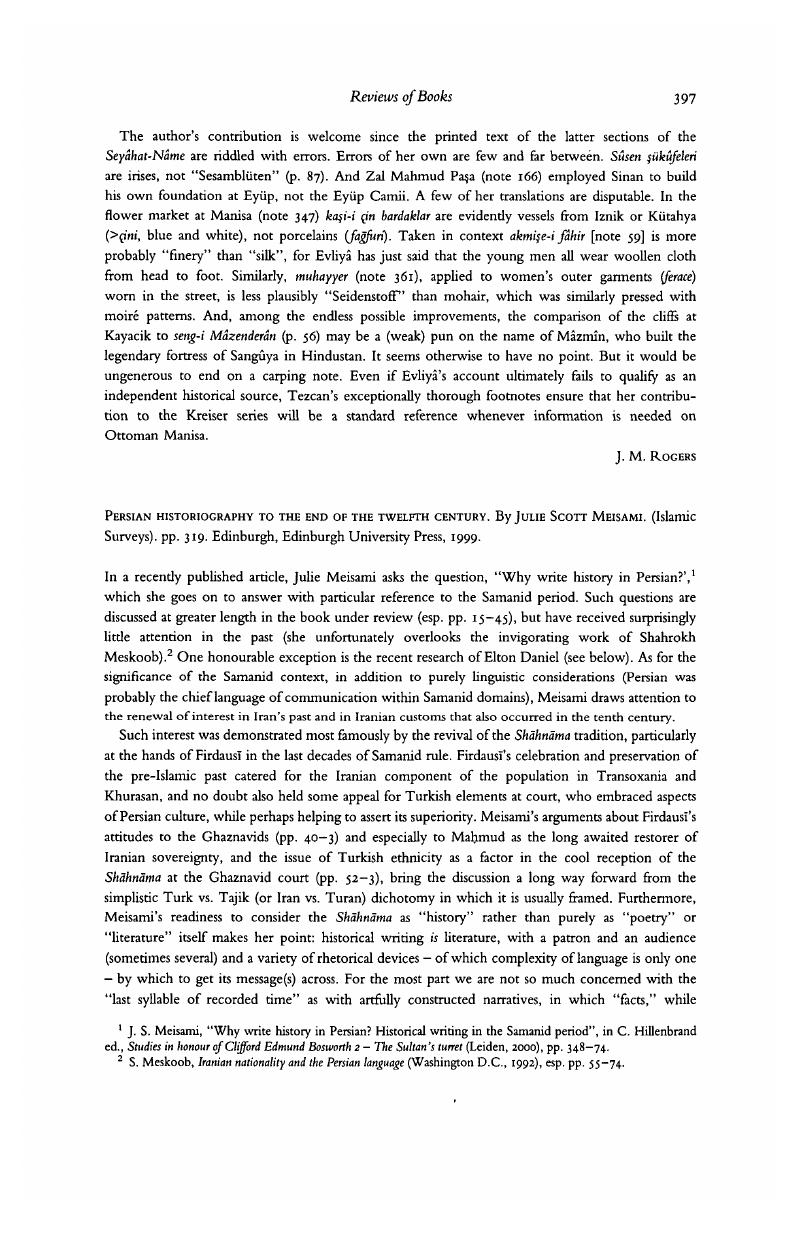No CrossRef data available.
Article contents
Persian historiography to the end of the twelfth century. By Julie Scott Meisami. (Islamic Surveys). pp. 319. Edinburgh, Edinburgh University Press, 1999.
Published online by Cambridge University Press: 24 September 2009
Abstract

- Type
- Book Review
- Information
- Copyright
- Copyright © The Royal Asiatic Society 2000
References
1 Meisami, J. S., “Why write history in Persian? Historical writing in the Samanid period”, in Hillenbrand, C. ed., Studies in honour of Clifford Edmund Bosworth 2 – The Sultan's turret (Leiden, 2000), pp. 348–74Google Scholar.
2 Meskoob, S., Iranian nationality and the Persian language (Washington D.C., 1992), esp. pp. 55–74Google Scholar.
3 Daniel, Elton, “Manuscripts and editions of Bal‘amī's Tarjamalt-yi tārīkh-i Ṭabarī”, JRAS (1990), pp. 282–321Google Scholar (esp. p. 286); cf. his unpublished paper, “The Samanid ‘translations’ of Tabari”, cited by Meisami.
4 Poliakova, E. A., “The development of a literary canon in medieval Persian chronicles: the triumph of etiquette”, Iranian Studies, 17/ii–iii (1984), pp. 237–56CrossRefGoogle Scholar.


